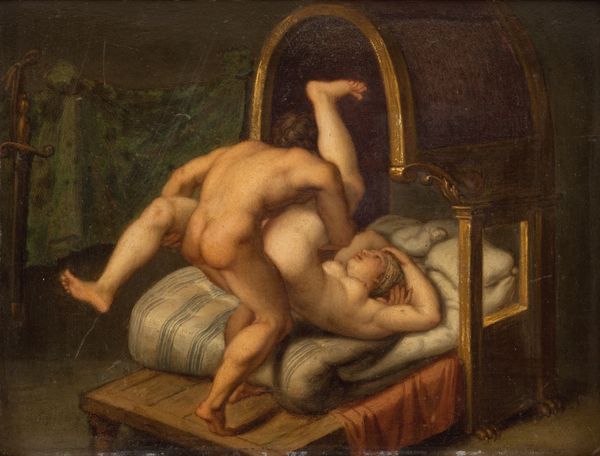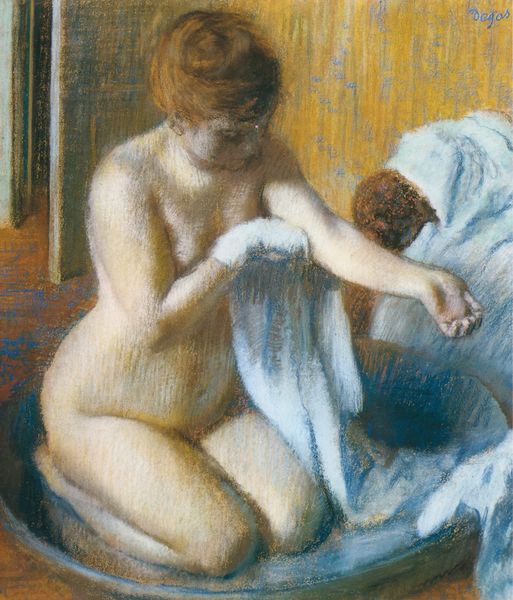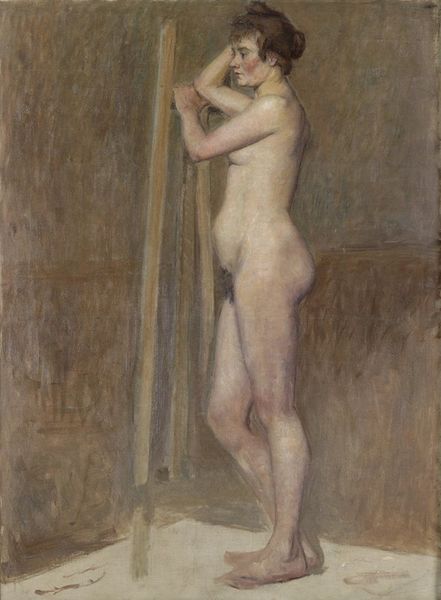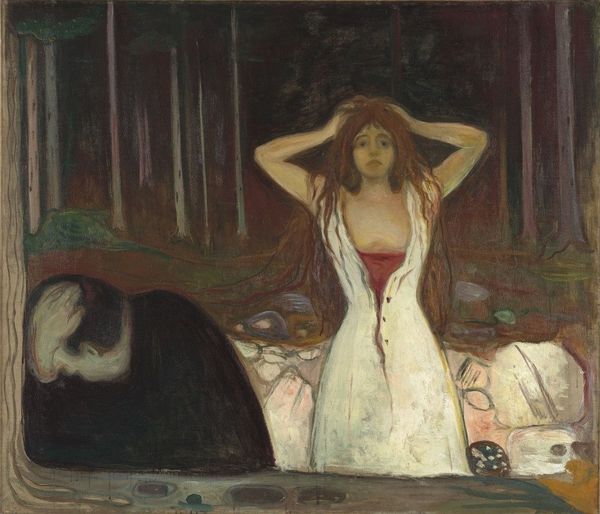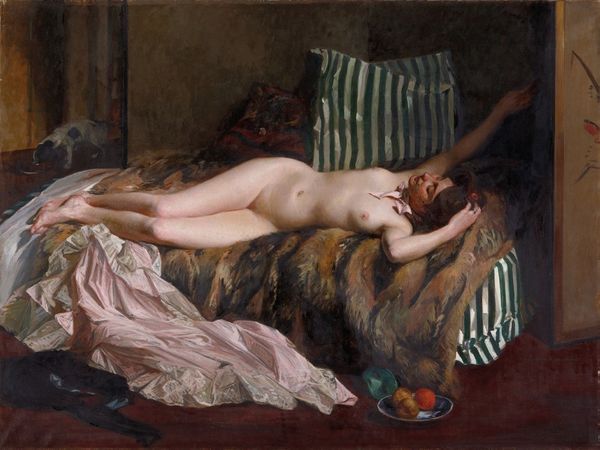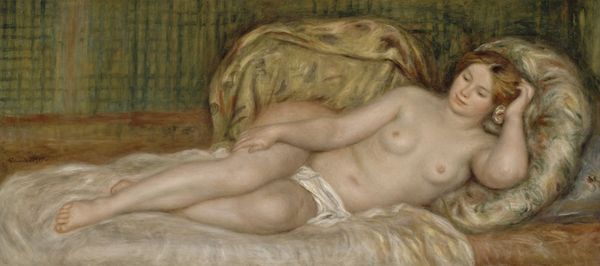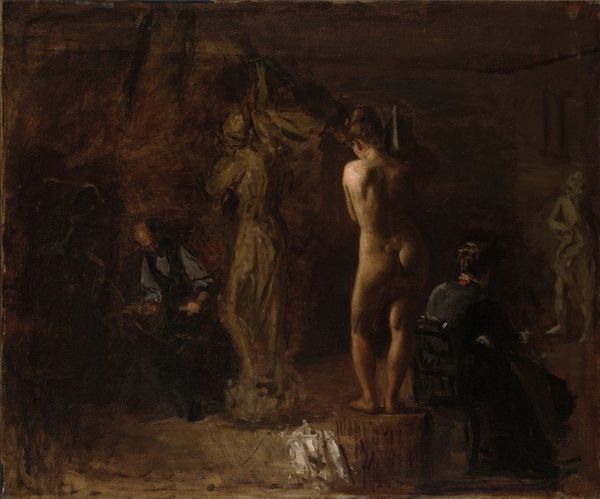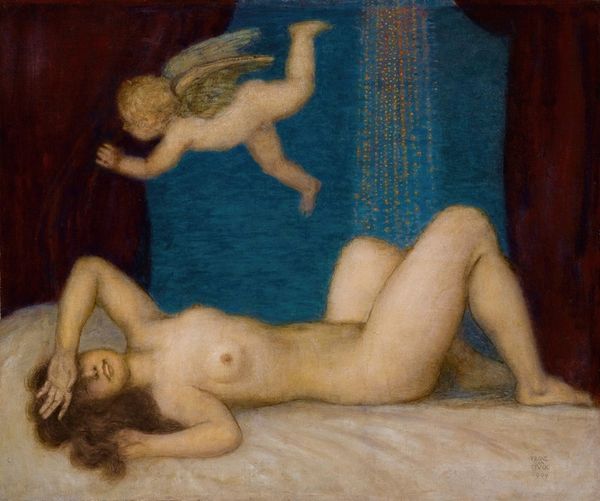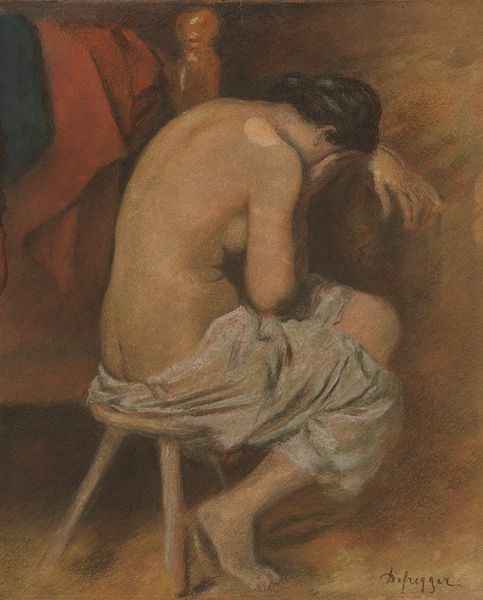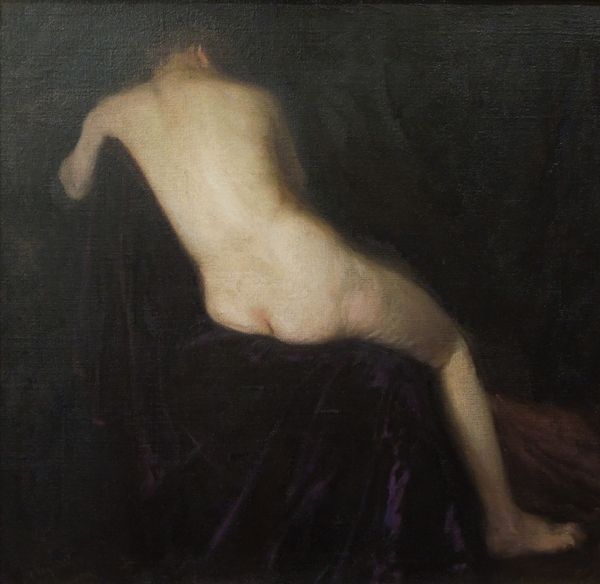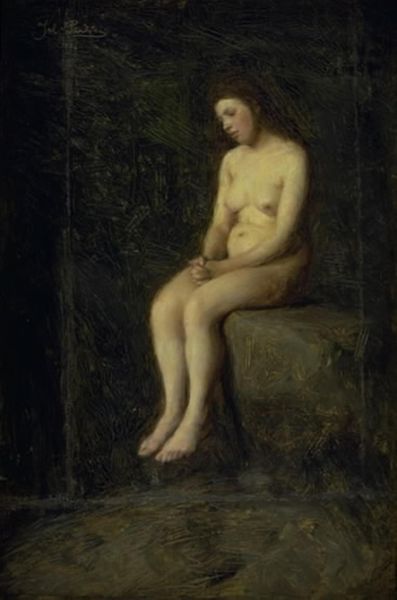
Copyright: Public domain
Editor: Karoly Ferenczy's 1904 oil painting, "Painter and Model," is intriguing. It feels very staged. What are your initial thoughts about this piece? Curator: It’s fascinating to consider Ferenczy's process here. Notice how the materials themselves, the oil paint, have been applied – thick impasto in the background, more thinly on the figures. Think about the social context: Academic art was grappling with Impressionism. How did Ferenczy navigate the marketplace of art in Budapest at that time? What kind of patronage was he reliant on? Editor: So, you’re seeing this as a statement about the art world itself? The artist’s labor and how it was valued? Curator: Precisely! Consider the materials employed versus the subject matter. Oil paint was becoming more accessible, which democratized the means of production, to an extent. The female nude, though, remains a highly consumed subject. Is Ferenczy questioning this dynamic, or simply participating in it? What kind of choices were available to an artist living and working in Budapest in 1904? Editor: That is interesting, framing it in the context of artistic labour and material accessibility at that moment. I hadn’t considered it that way, focusing mostly on the… content. Curator: Often the means of production can illuminate the subject matter in unique ways. By acknowledging that an art object does not exist in a vacuum but instead arises from specific socio-economic circumstances and is also constructed from very specific, tangible materials, one might then start to interrogate that art object in a more rigorous manner. What do you take away from that? Editor: I guess it pushes me to think about the act of painting itself as labor, as something produced, not just divinely inspired! Thanks, that’s a fresh way to look at it.
Comments
No comments
Be the first to comment and join the conversation on the ultimate creative platform.
